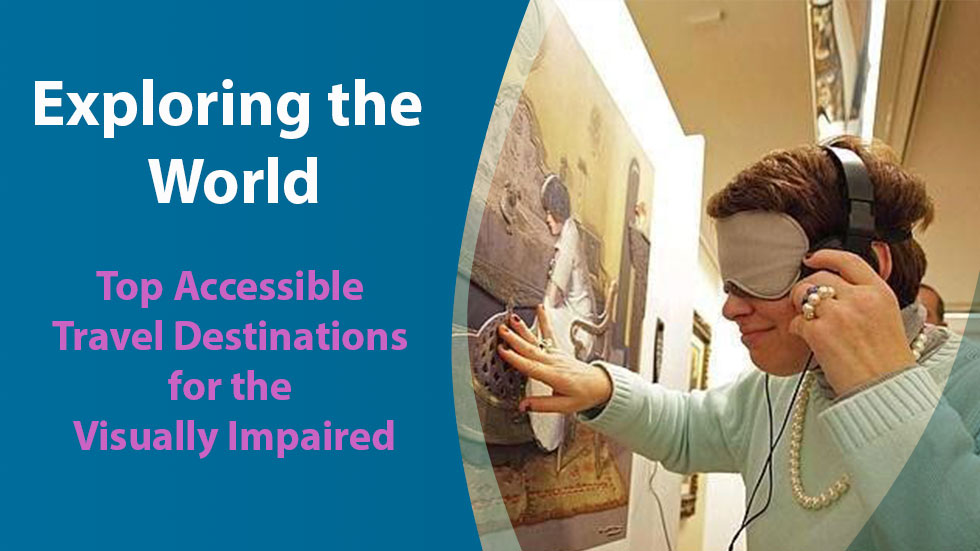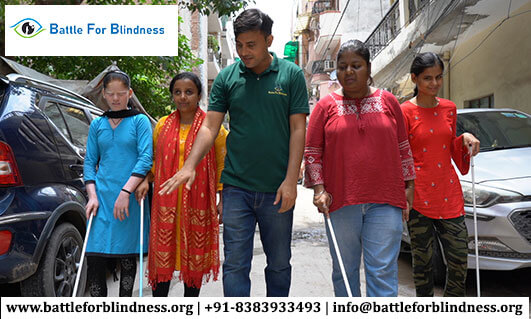
Travel and recreation are essential aspects of life that provide opportunities for exploration, adventure, and relaxation. For visually impaired individuals, accessibility is a crucial factor when planning trips. Fortunately, many destinations are becoming increasingly aware of the need for inclusivity, offering accessible facilities and services that enhance the travel experience. This blog will highlight some accessible destinations for the visually impaired, emphasizing the features that make them suitable for enjoyable travel.
1. Understanding Accessibility in Travel
Accessibility in travel refers to the design and implementation of facilities, services, and environments that accommodate the needs of individuals with disabilities, including those who are visually impaired. Accessible travel can include features like tactile maps, audio guides, braille signage, and trained staff to assist travelers.
2. Top Accessible Destinations for the Visually Impaired
a. Washington, D.C., USA
Washington, D.C. is renowned for its commitment to accessibility, with many museums, monuments, and public spaces designed to be inclusive. Key features include:
- Tactile Maps and Guides: Institutions like the Smithsonian offer tactile maps and guided tours tailored for visually impaired visitors.
- Audio Descriptions: Many museums provide audio descriptions of exhibits, allowing visually impaired travelers to engage fully with the content.
- Public Transportation: The Washington Metro system is equipped with audible announcements and braille signage, making navigation easier.
b. Paris, France
Paris is making strides in accessibility, particularly for visually impaired travelers. Notable features include:
- Tactile Paving: Many public areas in Paris have tactile paving to guide visually impaired individuals along sidewalks and across streets.
- Accessible Attractions: Major attractions like the Louvre and Eiffel Tower offer guided tours with audio descriptions and sensory experiences.
- Public Transport: The RATP (Paris public transport system) provides assistance services for visually impaired individuals, ensuring smooth travel throughout the city.
c. London, England
London is well-known for its efforts in creating accessible travel experiences. Key highlights include:
- Audio Guides: Many attractions, such as the British Museum and the Tower of London, offer audio guides tailored for visually impaired visitors.
- Braille Signage: Public transport stations, including the Tube and buses, feature braille signage and audible announcements.
- Accessible Parks: London’s parks, like Hyde Park and Regent’s Park, offer sensory gardens designed for visually impaired individuals to explore.
d. Tokyo, Japan
Tokyo is committed to becoming a more accessible city, making it an excellent destination for visually impaired travelers. Notable aspects include:
- Tactile Ground Indicators: The city features tactile ground indicators (TGIs) that guide visually impaired individuals along streets and to public transportation.
- Assistive Technology: Some museums, like the Tokyo National Museum, provide devices that offer audio descriptions of exhibits.
- Comprehensive Transportation: Tokyo’s public transportation system has staff trained to assist visually impaired individuals, along with audible announcements.
3. Tips for Planning Accessible Travel
When planning accessible travel for visually impaired individuals, consider the following tips:
- Research Destinations: Look for destinations known for their accessibility features and available services for visually impaired travelers.
- Contact Accommodations in Advance: Before booking, contact hotels or accommodations to inquire about their accessibility features and services for visually impaired guests.
- Utilize Technology: Leverage travel apps that provide information about accessibility features, such as Google Maps, which can help with navigation.
- Pack Essential Items: Consider packing items such as a white cane, braille labels, or personal audio devices to enhance the travel experience.
4. Community and Support
Many organizations advocate for accessible travel and provide resources for visually impaired individuals. Connecting with these organizations can offer valuable information, support, and community networks for travelers.
Conclusion
Traveling is an enriching experience that should be accessible to everyone, including visually impaired individuals. By choosing destinations with accessible features and services, travelers can enjoy enriching experiences that foster exploration and adventure. As the travel industry continues to evolve towards inclusivity, more opportunities will arise for visually impaired travelers to embark on memorable journeys and create lasting memories. Embracing accessible travel is a step towards a more inclusive world, where everyone can explore and enjoy the beauty and diversity our planet has to offer.





